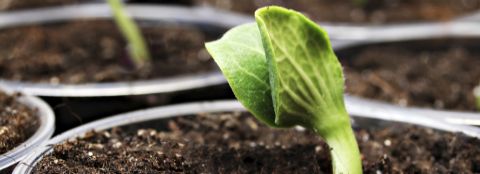February Northern Garden Checklist

Starting Seeds Indoors:
- Before starting seeds inside, look up the last spring frost date in your area, then check the back of the seed packet for recommended planting dates.
- Give seeds 12-16 hours of light daily. Supplement sunlight with grow lights if needed.
- Place seeds in a warm spot between 65-75°.
- Fertilize seedlings once they begin to grow. Use a diluted solution of a complete water-soluble fertilizer every other week. Follow mixing directions on the label.
- Check seedlings that you may have started indoors for sudden wilting and rotted stems caused by damping off. This fungal disease causes young seedlings to collapse. Remove infected plants as soon as they are discovered. Drench the soil with a fungicide labeled for this use. Prevent this disease by using a sterile seed starter mix and clean containers.
- For more information on starting seeds indoors.
Bulbs:
- Once forced bulbs are done flowering, move them to a sunny window and water thoroughly as needed. Fertilize with a diluted solution of flowering houseplant fertilizer. After the danger of frost has passed you can move these into the garden. But be patient, they may not bloom for two years.
Late Winter Pruning:
- The best time to prune deciduous plants is just prior to new growth when plants are dormant. It’s also easier to see the shape when their foliage is gone.
- Summer and fall blooming shrubs: prune now until growth begins. Late winter/early spring pruning will not interfere with summer flowering and allows the plants to recover quickly.
- Wait until after flowering to prune lilacs, forsythia and other spring flowering shrubs.
- Finish pruning tropical hibiscus overwintered indoors to encourage summer bloom outdoors. Start fertilizing with a flowering plant food once new growth begins
- Start thinning and pruning raspberry plantings as the snow begins to recede. Remove any old stems that bore fruit last summer. Leave 4 healthy canes per foot or 6 to 8 per hill.
- Prune on a mild and dry day.
- Limit pruning to 30% or less in one growing season, and avoid shearing branches that can lead to poor structure and pest problems.
- Check, clean and sharpen hand pruners. Replace any damaged or old blades that can no longer be sharpened. High-quality pruners have replacement blades, while less expensive pruners must be replaced when damaged.
- Clean from the inside out, removing waterspouts, suckers, dead, or crossing branches.
- Water sprouts occur along branches, usually at pruning sites. Suckers grow from the trunk or roots.
- Prune out one of a pair of crossing or rubbing branches. This eliminates rubbing that creates an open wound that can attract insects.
- When pruning dead or diseased branches, make cuts into healthy wood, well below the affected area, above a healthy bud, back to an adjoining branch or flush with the branch bark collar.
- Disinfect tools between each cut.
- Use several pruners and a bucket of disinfectant such as a one part bleach and nine parts water or 70% alcohol solution. Set spare pruners in the bucket of disinfectant while using one to make the cut.
- Switch pruners between plants or between cuts when removing cankers or diseased branches. The longer the tools remain in the solution the better disease control you’ll achieve.
- Consider hiring a certified arborist to manage pruning, especially for larger trees.
For more pruning information: A Guide to Successful Pruning, by Virginia Tech
Landscape Care
- Start cleaning up the garden as weather permits. Check and repair animal damage and remove plant debris that may have collected under the snow. Cut back stems and seedpods left standing for winter and add them to the compost pile.
- Review garden bed designs to make sure all parts of the garden can be reached for maintenance chores. Plan on adding steppers or walkways in large garden beds for easier access.

